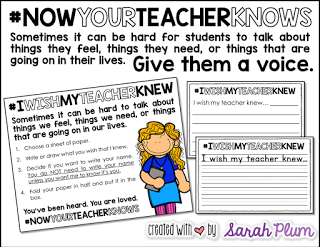I’ve been an edublogger for almost four years now (although that term should be applied lightly as I’ve been more educator and less blogger as of late). I’ve noticed a trend: four years ago you’d see post after post about the goings-on of individual classrooms (with lots of authentic, unpolished images). Now the blogosphere and social media is filled with posts, images, and videos telling you (the reader and teacher) to do x, y, or z and why you should abandon a, b, and c.
As a teacher first and edublogger second, I have to say that I’m frustrated. I’m frustrated for new teachers, who may feel pulled in 1,000 different directions – and likely pit against the realities of their classrooms and the window dressing of social media (which the fantastic Jillian Starr talks about here). I’m frustrated for veteran teachers, who may feel like the many strategies and practices used during their successful teaching career are being called into question or labeled as “what not to do”. I’m frustrated for “in-between” teachers just hitting their stride in the profession, like myself, who now feel stuck between “what’s new” and “what’s working.”
After biting my tongue for months and scrolling on past image after image and post after post with the “you must do THIS” tone, it hit me like Monday morning on a full moon. We are, in many ways, doing to ourselves what we so ardently fight against legislators doing: making assumptions about classrooms other than our own and prescribing a one size fits all solution.
So this is my version of “you must do x, y, and z and NOT a, b, and c.”
- Not every child will learn best sitting on the floor, a wobble chair, a rocker, a yoga ball, or while standing up. Some children will learn best at a desk.
- Not every child will learn best with an iPad, or scanning a QR code, or making a video. Some children will learn best without a piece of technology in their hand.
- Not every child will learn best by completing a craftivity, doing an interactive notebook, or finishing a recording sheet in a center. Some children will learn best with just a paper and pencil.
- Not every child will learn best with a room filled from ceiling to floor with fluorescent anchor charts, laminated posters, or more bulletin board border than the teacher store. Some children will learn best with less stimulation.
- Not every child’s behavior will be managed by classroom currency, a positive clip chart (yes, even mine!), brag tags, Class Dojo, or a positive note home. Some children will need a clip chart, color system, or “old-fashioned” phone call home.
Every child, however, will learn best with a teacher that considers their needs – not the needs of the child in a classroom clear across the country viewed through the lens of Periscope, Twitter, Instagram, Facebook, or a blog.
If your students benefit from alternative seating? Rock on! If your students learn better by reading on an iPad? Do it! If your students are motivated by themed decorations and lots of color? Keep it!
At the end of the day, I don’t know what’s best for your classroom. I don’t know your students – or you! I can’t possibly give you better advice or insight than you can give yourself by making something your own. Do whatever is best for your students and leave the rest in your browser history.





























